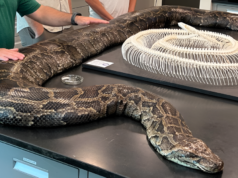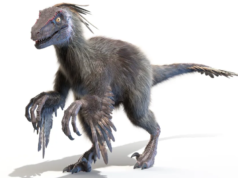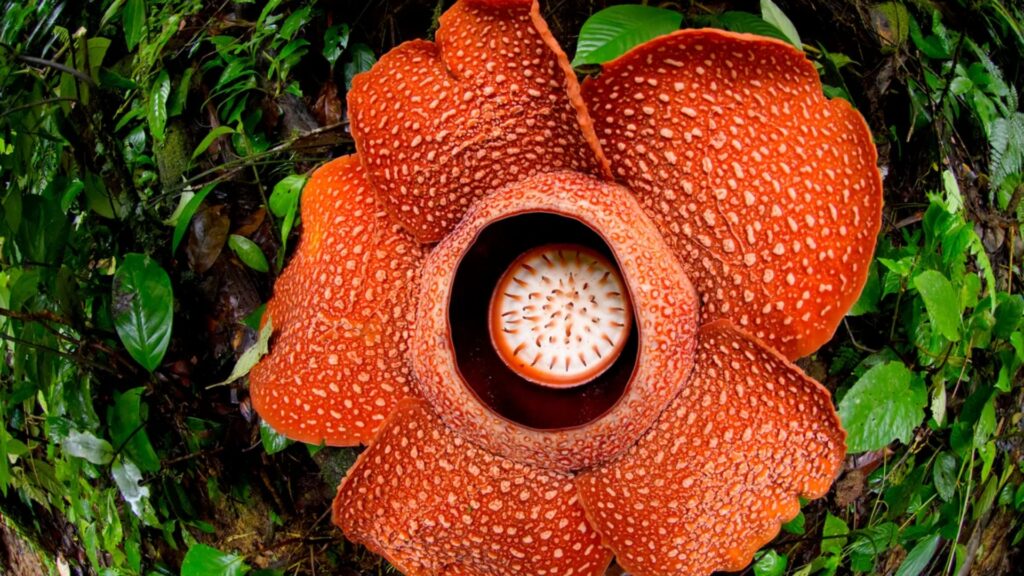
Plants may seem passive, but some display animal-like behaviors to survive. From mimicking movements to actively hunting prey, these fascinating organisms challenge our perceptions. This gallery explores 10 incredible plants that behave like animals in almost intentional ways. You’ll discover their survival strategies, unique adaptations, and how these characteristics have evolved. Prepare to be amazed by the dynamic lives of plants that prove nature always finds a way!
Venus Flytrap – Nature’s Predator
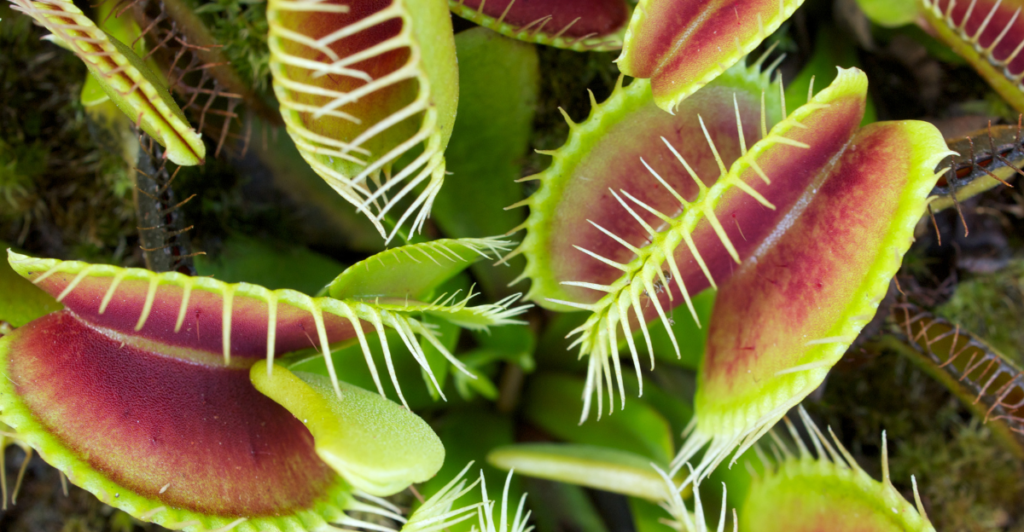
The Venus flytrap is the most famous example of a plant that acts like an animal. Native to North Carolina, it uses modified leaves as snap traps to capture insects. Sensitive hairs detect movement, causing the trap to close in under a second. The plant then secretes digestive enzymes to extract nutrients from its prey. This adaptation helps it thrive in nutrient-poor soils, demonstrating how plants can “hunt” for survival.
Mimosa Pudica – The Shy Plant
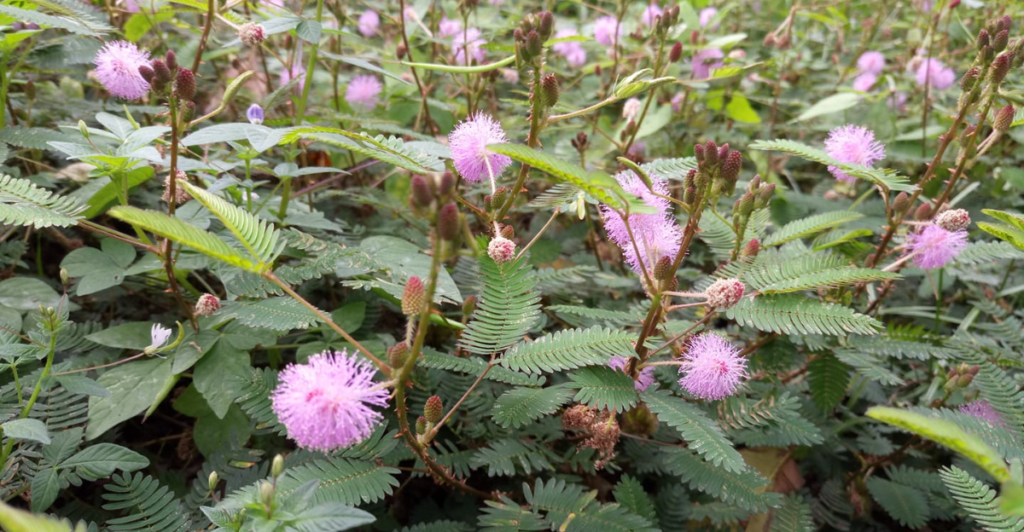
Commonly called the “sensitive plant,” Mimosa pudica reacts to touch by folding its leaves. This rapid movement mimics animal reflexes, potentially scaring off herbivores. Scientists believe this behavior also minimizes water loss and protects plants from environmental threats. Found in tropical regions, this intriguing plant’s defensive strategy shows how plants can use movement to survive, even without a nervous system. It’s a living example of nature’s ingenuity at work.
Pitcher Plants – Luring Prey
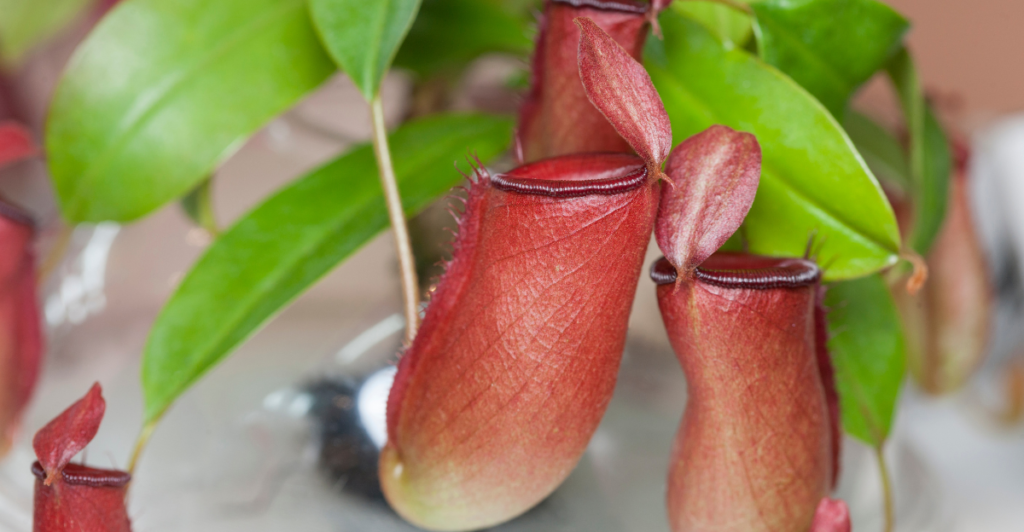
Pitcher plants have evolved deep, slippery leaf structures filled with digestive fluids to trap insects and small animals. The pitcher’s rim is often slippery, and nectar lures prey inside. Once trapped, the plant digests its meal to gain nutrients otherwise unavailable. These carnivorous plants are found in various ecosystems, including rainforests and bogs, demonstrating how adaptation can make plants active hunters in their habitats.
Sundews – Sticky Trappers
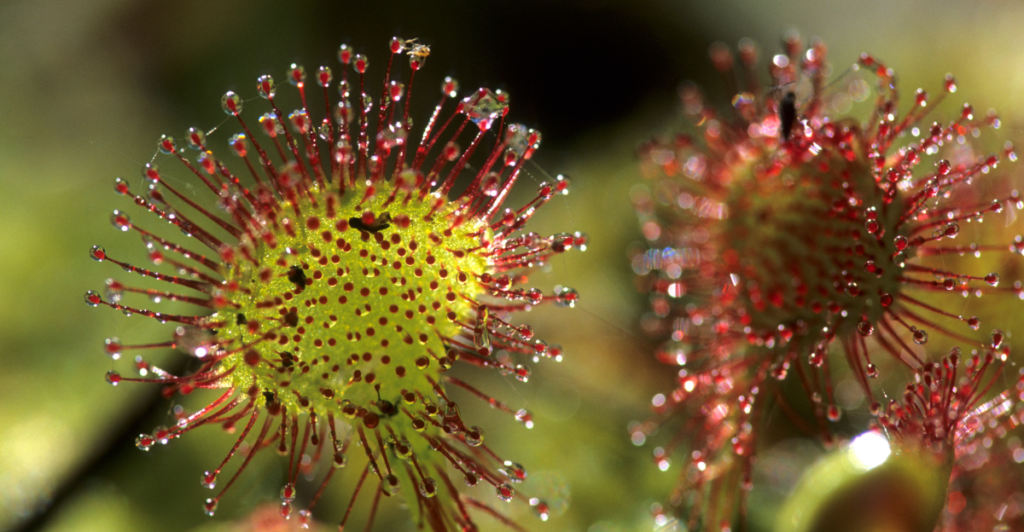
Sundews use sticky, gland-covered tentacles to trap unsuspecting insects. When prey lands on a tentacle, the plant’s sensitive structure triggers surrounding tentacles to curl inward, ensnaring the insect. The plant secretes enzymes to digest the prey, absorbing valuable nutrients. Found worldwide in nutrient-poor soils, sundews’ animal-like predation is an elegant solution to their challenging environments. Their movements are a vivid reminder of plants’ surprising dynamism and adaptability.
Corpse Flower – The Master of Deception
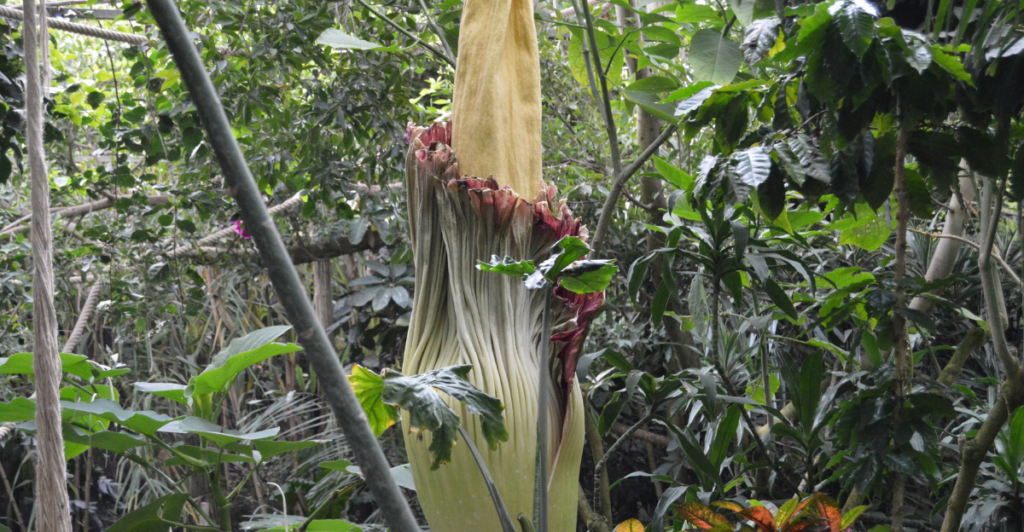
The corpse flower, or Titan arum, mimics the smell of rotting flesh to attract carrion insects. Native to Sumatra, this massive flower uses its putrid scent to lure flies and beetles, which act as pollinators. The plant’s remarkable strategy highlights how plants can manipulate animal behavior for reproduction. Despite its intimidating reputation, the corpse flower showcases an incredible example of nature’s interconnectedness and the unique ways plants ensure their survival.
The Telegraph Plant – Dancing Leaves
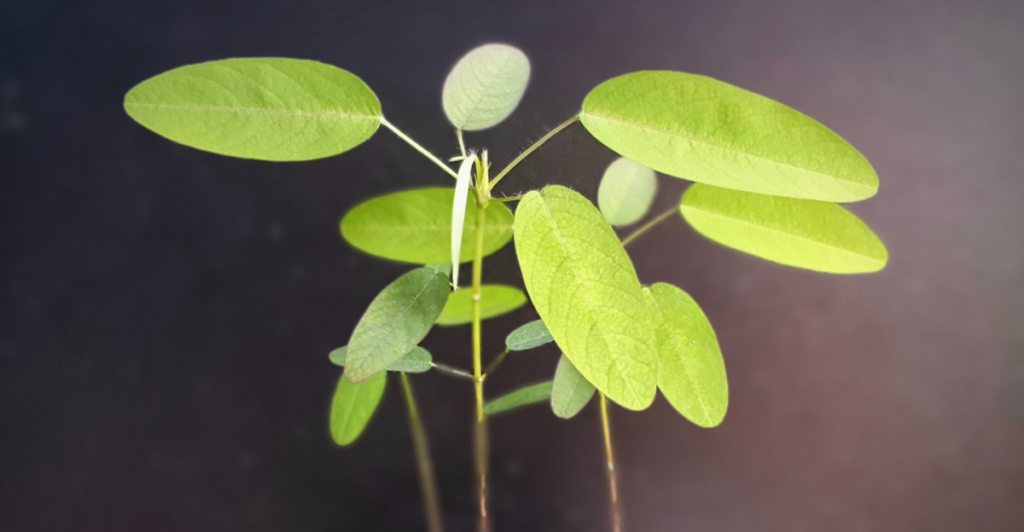
The telegraph plant (Desmodium gyrans) is famous for its rapid leaf movements. Its small lateral leaflets move up and down in a rhythmic “dance” in response to sunlight, temperature, or vibration. This movement is thought to optimize light absorption or discourage predators. Found in tropical Asia, this behavior highlights the remarkable ability of plants to react to environmental stimuli, mimicking animal-like responsiveness and showcasing the subtle elegance of plant adaptations.
Bladderwort – Underwater Hunters
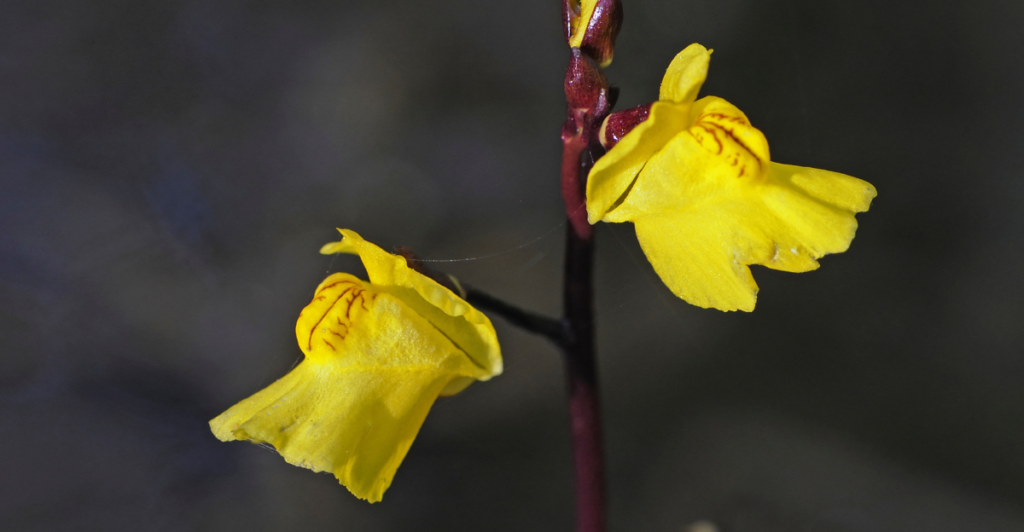
Bladderworts are aquatic carnivorous plants with tiny bladder-like traps. These traps create a vacuum that sucks in prey, such as water fleas, when triggered. The process is one of the fastest movements in the plant kingdom, rivaling the speed of some animal predation. Found in freshwater habitats worldwide, bladderworts are a striking example of how plants can develop complex mechanisms to secure nutrients in nutrient-scarce environments.
Dancing Plant – Musical Reactors
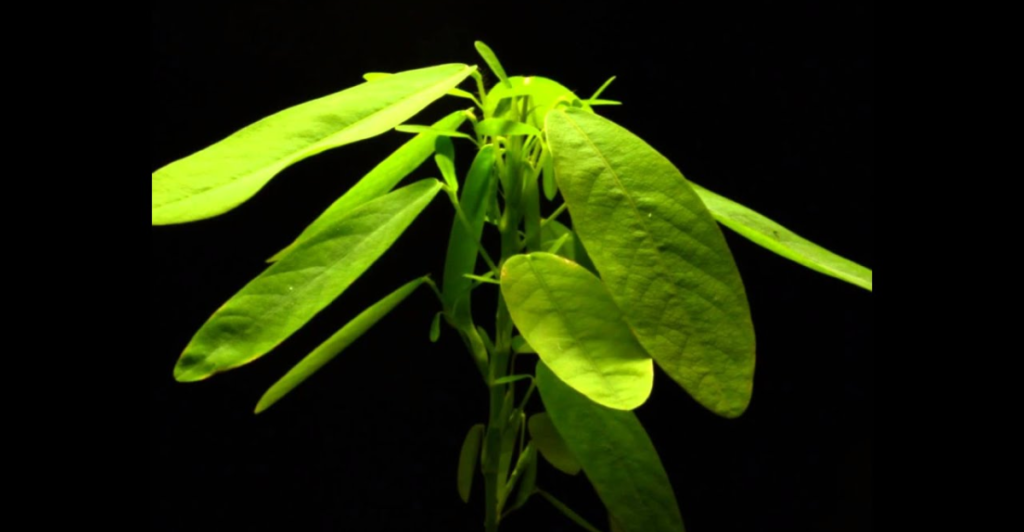
The dancing plant (Codariocalyx motorius) responds to sound vibrations by moving its leaves. This rapid motion is a rare trait in plants and can occur in response to natural stimuli like wind or artificial stimuli like music. Native to Southeast Asia, the plant’s behavior is not fully understood, but it’s thought to aid photosynthesis or deter herbivores. Its unique ability to “dance” makes it a fascinating blend of plant and animal traits.
Cuscuta – The Parasitic Dodder
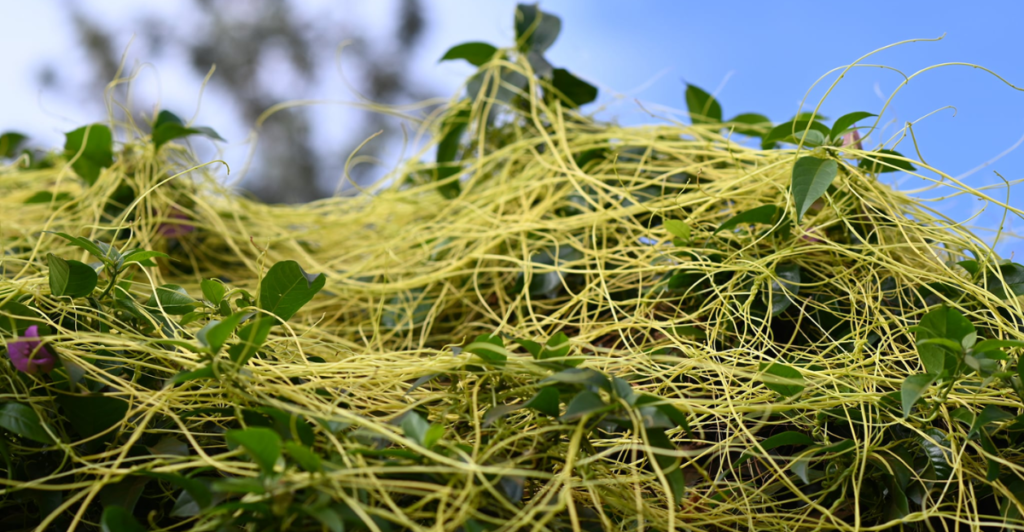
Cuscuta, or dodder, is a parasitic plant that actively seeks its host by detecting chemical signals. Once it finds a suitable plant, it wraps around the host and absorbs nutrients through specialized haustoria structures. This active searching behavior mirrors the way animals locate food sources. Cuscuta’s strategy allows it to survive without performing photosynthesis, showcasing a remarkable example of adaptation in the plant world.
Hydnora Africana – Underground Lure
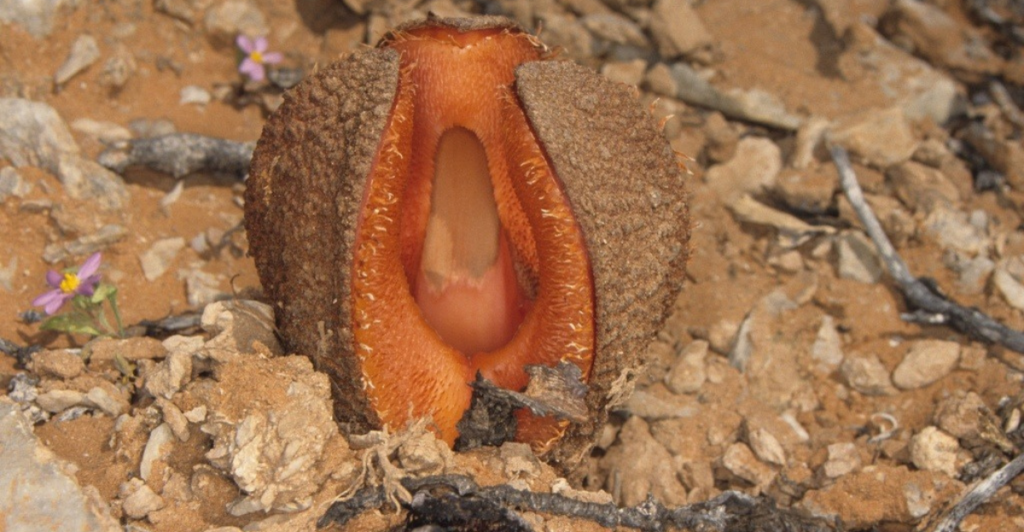
Hydnora africana is a parasitic plant native to southern Africa that spends most of its life underground. It produces a fleshy flower that emits a smell of feces to attract dung beetles and carrion insects, which serve as pollinators. This plant’s bizarre appearance and animal-like mimicry illustrate how plants can adapt to attract specific animals for survival. Its unusual lifecycle and characteristics make it a true marvel of evolution.
Plants with Animal Instincts
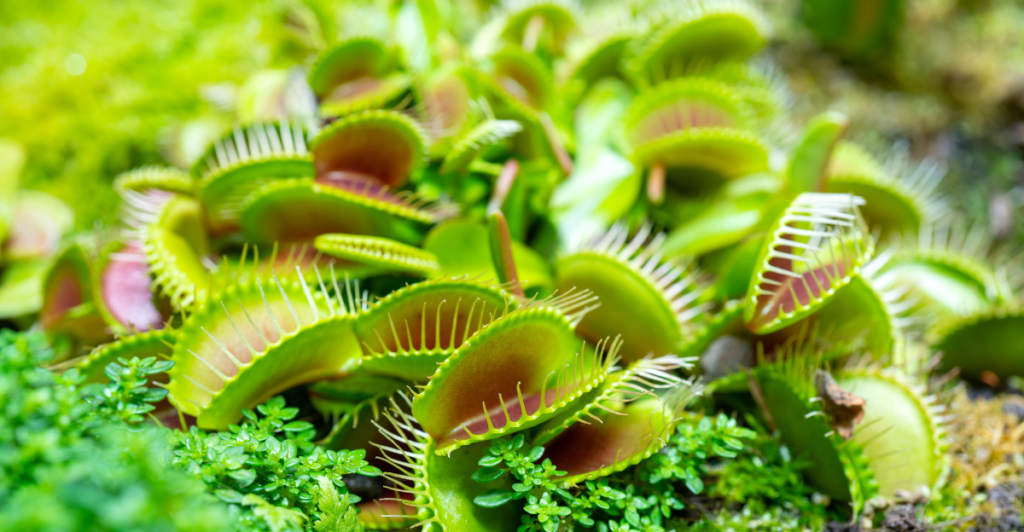
From trapping prey to mimicking movement, these 10 plants demonstrate how life finds extraordinary ways to thrive. These adaptations blur the line between plant and animal behavior, reminding us of nature’s incredible creativity. As we continue to study these plants, we uncover new insights into their complex strategies, deepening our appreciation for the natural world. These remarkable species invite us to rethink what it means to be a “plant.”
Explore the Wonders of Nature
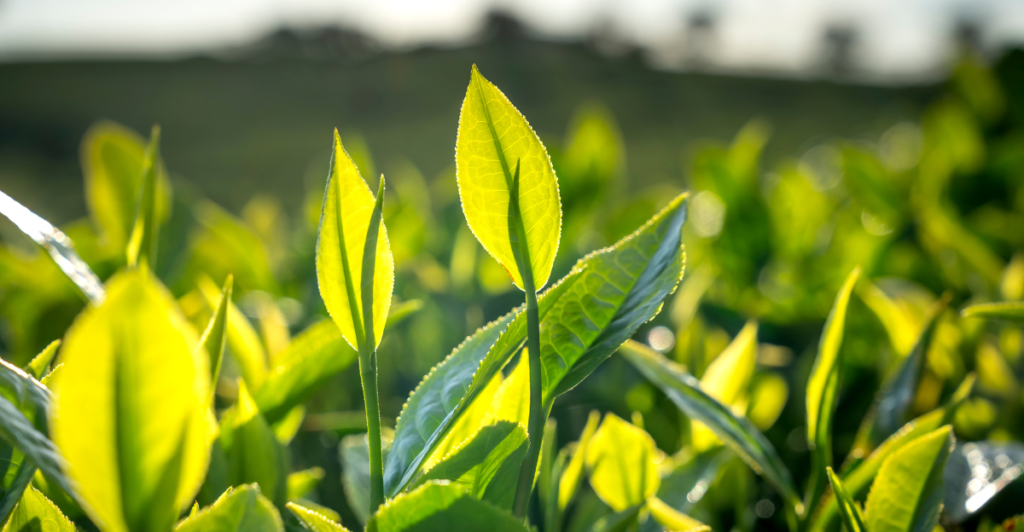
Nature is full of surprises; plants that behave like animals are just the beginning. If these incredible adaptations capture your imagination, a whole world of unusual organisms is waiting to be discovered. Dive into the wonders of biodiversity and explore how life evolves unexpectedly. Stay curious and keep learning because the more we understand nature, the more we appreciate its boundless creativity and resilience.
Discover more of our trending stories and follow us to keep them appearing in your feed

Meet the Massive Crocodiles That Make Their Homes 40 Feet Underground
America’s Top 13 Most Dangerous Rivers
12 Plants and Animals That Call Only One Place Their Home
America’s 12 Most Gorgeous Trees
Stay connected with us for more stories like this! Follow us to get the latest updates or hit the Follow button at the top of this article, and let us know what you think by leaving your feedback below. We’d love to hear from you!


